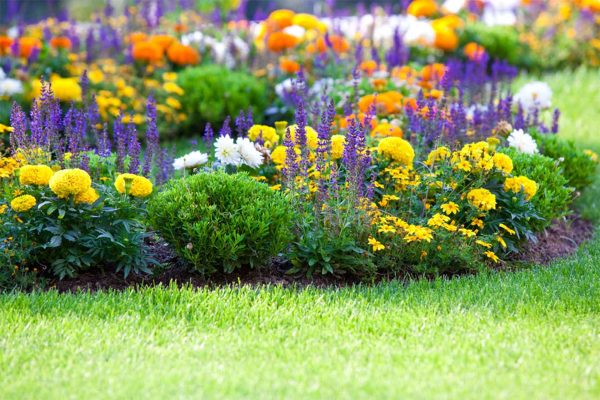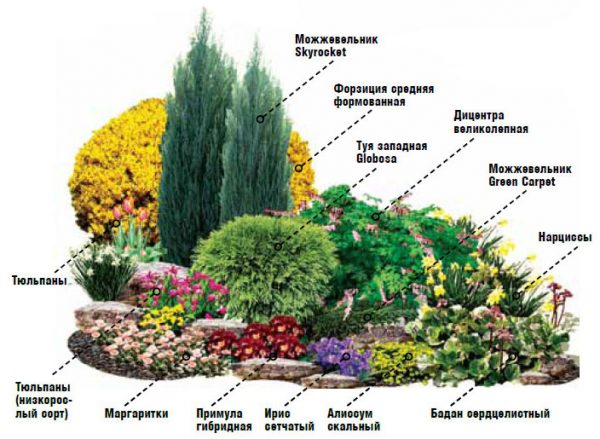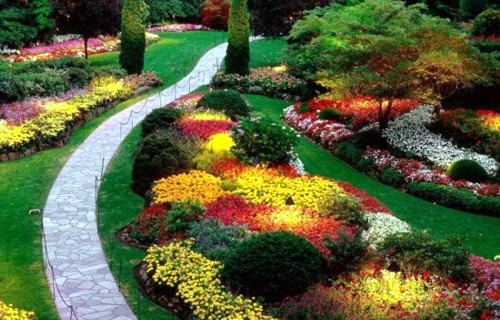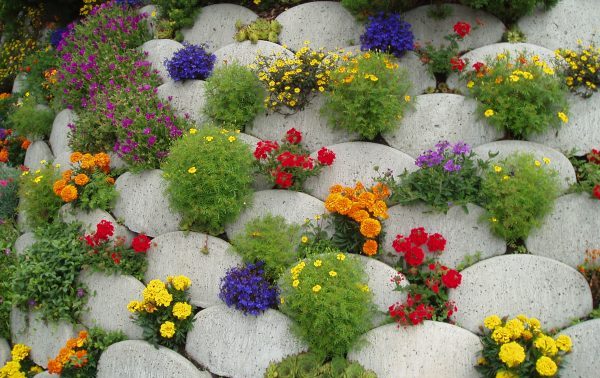How to make a continuous flowering flower bed from perennials: schemes and options
Content
The scheme of a flower bed of this type
In order for you to enjoy the beauty and aromas of the planted plants throughout the season, from early spring to late autumn, it is necessary to properly organize the flower garden scheme and the selection of suitable flowers. The main secret for beginners in creating a continuous flowering flower bed of perennials is to know exactly the flowering period of each crop. Thus, planting several varieties, the flowering period of which will gradually replace each other, will provide you with a fragrant and incredibly beautiful floral carpet all season. The second rule for planting such a flower bed is the care features and requirements of different plants. Therefore, when planting a flower garden with perennials, choose varieties with similar agricultural requirements. To get your bearings as accurately as possible, draw up a scheme for planting perennials in a flower bed, first on a piece of paper. Consider the following landing examples when organizing:
- In the central part of the site, it is customary to plant tall varieties. Together with flowering plantations, green shrubs can be planted in this place, which create a decorative effect. It is not recommended to place shrubs in a heap, it is better to plant them evenly so that they complement flowering bouquets.

- We plant low-growing plants, moving closer to the edge of the flower garden. The very edge can be decorated with creeping plants, which are able to hide all existing imperfections.
- When choosing colors, pay attention to the combination of shades in the ensemble. Do not be afraid to accentuate bright spots that can liven up the flower bed and make it incredibly bright.
Diy schemes for creating a flower bed of continuous flowering from perennials can be different, depending on how you would like to see it:
- flower garden spring tenderness;
- flower garden summer paints;
- flower garden autumn nobility.
Below you will find examples of perennials that you can use to create each of the three do-it-yourself compositions:
- We plant geranium and sedum near the edges of the flower bed. Geranium blooms first and blooms in June-July, then sedum takes the baton, which will delight the eye until mid-autumn.
- Then a row of irises of different varieties. The flowering period is from May to June.
- The next row is peonies and roses. These fragrant plants bloom in early May and continue until the end of July.
- Tall plants are planted near the fence or support - muzzle and millet, which bloom in August.
Selection of green shrubs
Green shrubs are a universal element of any flower bed, since they almost always organically complement a flower arrangement of plants of one year or perennials planted with their own hands. Unlike low-growing trees, ornamental shrubs grow much faster, and their vitality is much higher.For example, branches of a green shrub that have been caught in the night frost can be cut off, while its attractiveness will still be preserved. If you compare them with herbaceous plants, then green shrubs do not need to be planted every season and dug out for the winter.
So that even in winter there are bright colors on the site, when planning a scheme for planting plantings in a flower bed with your own hands, consider the following: decorative leaf shrubs are able to delight with juicy greens almost until frost; decorative fruit shrubs, for example, cotoneaster or dwarf mountain ash - these are bright colors in the winter garden.
Green shrubs are classified into three groups:
- decorative flowering;
- decorative leaf;
- decorative fruits.
A flower garden of perennials is well decorated with ornamental-leaved shrubs, which are divided into: deciduous and evergreen. When choosing a type of shrub, consider the following features:
- Weather conditions and frost resistance.

- Demanding lighting (sunny area, partial shade or shade).
- Soil type.
- "Relationship" with neighboring plants.
When planting a shrub in a flower arrangement, consider the maximum size. Dwarf and miniature green shrubs and bushes, creeping forms are traditional elements in flowering areas. In addition to a beautiful background, such plants are able to block the spread of weeds on the site. The sunny area will be perfectly decorated with compositions with bright or multi-colored leaves:
- Japanese spirea with fiery red and orange leaves;
- dwarf barberry;
- golden cloud of thuja;
- variegated honeysuckle;
- green thyme.
To complete the floral arrangement, plant tall meadowsweet, shrub magnolia, hawthorn or forsythia in the last row. If the flower garden is located in partial shade, then preference should be given to the following types of shrubs: hydrangea, rhododendrons, heather. Plants with dark colored leaves are best planted in the shade:
- conifers (juniper, caparisok or berry yew);
- red and black elderberry;
- chubushnik;
- snowberry,
- boxwood.
Video "Instructions for creating a flower garden"
Video instruction to help you create a flower garden.
Choice of perennial flowers
Depending on the "mood" of a blooming flower bed (spring, summer or autumn), various flower crops are used for planting. The choice of pets should be approached very carefully, taking into account the following parameters:
- illumination of plants;
- drought tolerance;
- soil requirements;
- necessary care.
To create a picturesque effect, there is no need to plant many perennials, it will be quite sufficient to choose 5-7 specimens with different flowering periods. A spring-type flower garden is associated with the very first flowers and the most delicate colors. Therefore, in such a flowerbed, miniature daisies and primroses, multi-colored pansies and sunny daffodils, magnificent yellow purple crocuses and, of course, a rainbow of early-flowering tulips will become welcome pets. It is these plants that bloom at the beginning of the season and will delight with their beauty within a month. They are replaced by peonies and late varieties of daffodils with tulips, as well as lupines and aquilegia, with the arrival of the last month of spring. By the end of May, imperial hazel grouses and hyacinths bloom.
With the arrival of summer, a flower bed of continuous flowering with perennials blooms with new, even brighter colors, for example: marigolds, hibiscus, zinnias, roses, hydrangea, delphinium. Of course, on a flower bed of continuous flowering, a variety of varieties of daylilies and beautiful lilies, echinacea and clapweed must be present. If perennials are properly and timely looked after, they will delight you with their color and unsurpassed aroma all summer long.
With the arrival of autumn, bright colors are replaced by the calm nobility of autumn plants.During this period, phloxes and chrysanthemums, cannes and lobelias bloom, carnations, begonias and delphiniums bloom again. To do this, remove faded inflorescences. To create an autumn carpet with bright colors with your own hands, plant several copies of Coreopsis, Gelenium or Aster. Outlandish balls of decorative bows, millennials and golden spheres of craspedia are ready to delight you almost to the very frost.
Features and Benefits
When creating a flower garden of continuous flowering, there are some peculiarities. The fact is that in order for the flower garden to turn out to be thick and bright, it is important to choose a well-lit place. Then clearly distribute the plots with the name of the plants that you will plant. This is necessary for the flowering to be constant. Before planting, the soil should also be well fertilized and baking powder (expanded clay, brick chips or river sand) should be added. It is very important not to allow the soil to dry out and remove weeds in a timely manner. Advantages of perennial flower beds:
- If we talk about the advantages of such a flower bed, then the most important thing is durability.
- Further, it should be noted that it is easy to care for and the ability to create a beautiful picture with your own hands, which will delight you all year round.
- You will have to spend money on perennials only once, but you will have to buy seeds of annual crops every year.
- Perennials do not deplete the soil, so they do not require constant maintenance.
- Unpretentiousness - a sunny place, partial shade and shade.
- The ability to create beauty with your own hands.
Video "What is a garden of constant flowering"
Demonstration video with useful information and plants.





